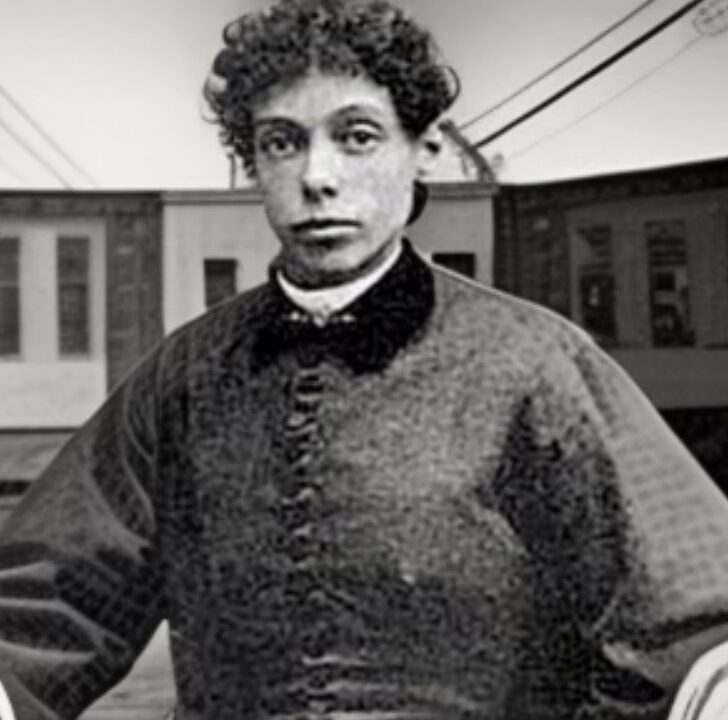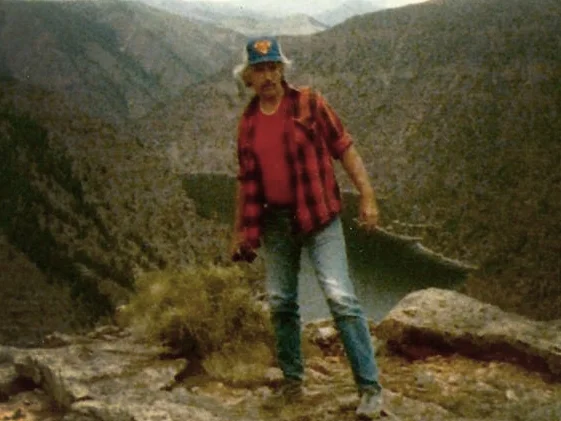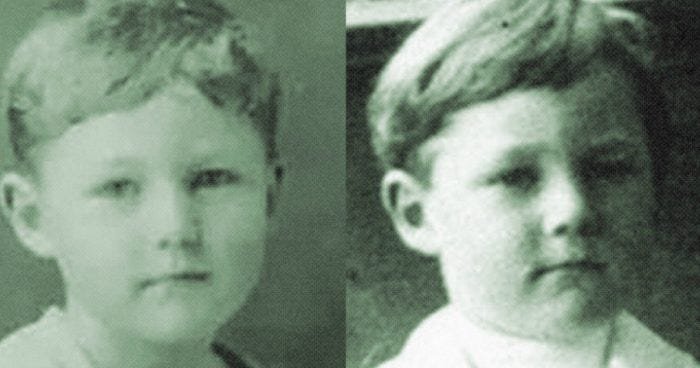On the morning of January 28, 1986, the USA collectively gathered around TVs across the country to spectate the hugely anticipated launch of the Space Shuttle Challenger. The spacecraft was due to launch into space to deploy a communications satellite and study Halley’s Comet.


Workplaces and schools nationwide even wheeled in TVs for workers and students to watch the exciting event, which was broadcast live on CNN, the new cable channel (at the time).
Schools, in particular, were buzzing with excitement: one of the seven crew members was a schoolteacher who planned to conduct the first science lesson in space. Perhaps for many children, this was the first science lesson they’d ever looked forward to.
Sadly, they’d never get to see it. What they did see, however, was the shuttle exploding live on TV. The commentators were lost for words as to what they’d just witnessed. “Obviously a major malfunction,” one of them eventually said, confirming viewers’ fears.
The Challenger had only launched just over a minute prior, and now it was engulfed in a ball of smoke in the sky.
None of the shuttle’s crew would make it out of the expedition alive. Their deaths, the severity of which was initially played down by NASA, were undeniably terrifying.
But what caused such a catastrophic failure on the Space Shuttle Challenger? And, was it preventable?
The Crew Aboard The Doomed Space Shuttle Challenger
The most widely known Challenger crew member prior to liftoff was 37-year-old social studies teacher Christa McAuliffe.
She was unique because she won her position within the crew; Ronald Reagan had launched the “Teacher in Space” project in August 1984, attracting over 10,000 entrants. Christa was the winner, thus bringing young eyeballs to the launch of the Space Shuttle Challenger.
As NASA had wanted, it piqued the interest of schoolchildren who may have otherwise found the venture into space boring.
In fact, to appeal to a younger audience, NASA had wanted to send Big Bird into space before launching the Teacher in Space project.
You read that right—Big Bird from Sesame Street (or the actor who wore the costume, at least). Sadly, the fluffy yellow costume was too big to fit safely inside the shuttle, so the plan was scrapped.
In addition to securing Christa as one of the seven crew members, NASA brought in space veterans Richard Scobee, Gregory Jarvis, and Michael Smith. Then, there was Ellison Onizuka and Judith Resnick, who had been the second woman in space.
Making up number seven in the crew was fellow astronaut Ronald McNair, who planned on doing something spectacular while in space: giving the viewers at home the first-ever concert in space.
The avid saxophone player planned to perform a solo gig floating above the earth.

Since the mission had fun elements for viewers to look forward to, such as Christa giving a science lesson and Ronald playing instruments, it was easy to forget they were all capable, established astronauts (with the exception of competition winner Christa).
They’d all been involved in prior missions for NASA, and the shuttle had already been on several missions without any issues.
The crew wasn’t the least bit apprehensive about their venture into space. In fact, they were all looking forward to it, especially since millions of people would be watching them live.
The Tragic Disaster
News cameras followed the crew as they entered Space Shuttle Challenger on January 28, 1986, ready to launch from Cape Canaveral, Florida.
The crew seemed in high spirits, laughing and joking with one another. Certainly, there was no sense of fear or unease about the journey. In fact, you could even hear pilot Michael Smith say he wasn’t going to lock his harness in case he needed to reach for something.
It was clear the crew felt that they were safe.
The buzz and excitement grew for crew and spectators alike when the countdown began. As the numbers got lower to liftoff, you could hear the crew chatter in excitement and exclaim, “Here we go!” as the Challenger took off.
The flames beneath the shuttle propelled it upward, shooting it into the sky at a rapid pace. For the first minute, it was an inspiring moment to behold. However, seconds later, things took a terrible turn.
The spacecraft appeared to explode without warning. The live commentators, who were jovial just moments before, were now lost for words, unable to vocalize what had just happened. Much like the public watching at home, they were horrified.
A streak of white smoke filled the sky as a rocket booster broke free. The last words recorded by one of the crew was, “Uh oh.”
The violent, engulfing flames that filled the sky led people to believe the crew had died instantly in the explosion. The footage that the cameras picked up depicted an eruption that looked unsurvivable.
That wasn’t the case. The crew’s fate would be much worse: at least three of them were alive and aware of everything happening—and about to happen—to them.
The cabin in which the crew was stationed for liftoff had detached from the exploding Challenger, initially saving the lives of the seven people inside it. However, this meant they were simply in free fall down to earth, which is an unsurvivable crash.
Still, during the freefall, Ellison Onizuka and Judith Resnick pressed their Personal Egress Air Pack devices, or PEAPs, to ensure they had six minutes of breathable air. They’d also activated pilot Michael Smith’s PEAP, which he’d been unable to reach during the explosion.
However, their fall to earth would have been just over two minutes. As you can imagine, it would have felt much longer for the crew, who had no choice but to brace for the impending impact.
It’s impossible to say how long the crew was conscious as they descended back to earth, though we do know the PEAPs provided oxygen for the entire two minutes and 45 seconds.
It is terrifying to imagine that at least some of the crew were conscious during this time; they knew their fate yet were powerless to do anything about it. They could only wait as they sped from 48,000 feet in the air at 207 mph toward the ocean.
The water would offer no less of a harsh landing than if they crashed onto land. When the cabin finally hit the water, the impact was so great that it ended their lives instantly.
It was difficult to see just how horrific the actual disaster was on television, which was a small mercy for the horrified viewers at home.
Only later did it transpire that the tragedy was preventable: NASA knew the Space Shuttle Challenger wasn’t entirely safe.
Why Did The Challenger Explode?
The Space Shuttle Challenger explosion, which occurred almost 40 years ago, is still one of the worst tragedies in NASA’s lengthy space exploration history.
What makes it all the more tragic is that months afterward, it would be discovered that it was preventable.

The first few weeks after the event saw retrieval teams, with the help of the US military, searching the impact zone for the crew’s remains.
Meanwhile, NASA was downplaying the disaster, telling the public that the crew had died instantly, not aware of their terrible fate.
Months later, this would be found to be untrue. A presidential commission was assembled to look at the disaster and find the root of the problem.
The team was spearheaded by former United States Secretary of State William P. Rogers and even had Neil Armstrong on board to offer expert insight into the failings of Space Shuttle Challenger.
The results made it clear that the disaster happened because the shuttle had problems with its O-rings (the rubber seals on the joints of its rocket booster). These seals are designed to stop hot gasses from escaping, thus preventing an explosion.
NASA had been aware of faults with the O-rings for almost 15 years.
They knew the O-rings could be burned through. If this happened on a mission, it would likely spell disaster since the hot gasses would invariably reach the fuel tank, resulting in a fatal explosion.
The freezing temperatures on the day of the Space Shuttle Challenger launch compounded this. Florida had been enduring a cold snap, which saw the launch pad covered in ice.
The cold weather caused the O-ring to lose its elasticity. It didn’t expand as it should have, leaving gaps in the rocket booster. This would allow hot gasses to leak out easily.
NASA knew the freezing temperatures could cause the O-rings to fail, and they knew the O-rings already had potentially deadly flaws, yet chose to continue with the launch anyway. But why? This was the next question William P. Rogers wanted to find the answer to.
When conducting his investigation, William found that employees of Morton Thiokol, the manufacturer of the O-rings, had raised concerns over their reliability some years before, in 1971.
Just 12 hours before the Challenger was due to take off, their engineers voiced their concerns again to their superiors and NASA. Their worries were ignored.
Morton Thiokol engineer Bob Ebeling and four of his coworkers pleaded with NASA and their bosses at Thiokol to postpone the mission at least. Their pleas were overruled: the mission was going ahead regardless.
On the morning of the scheduled launch of the Space Shuttle Challenger, an inspection of the launch pad found icicles, many of which were a foot long, covering the structure. Still, the launch wasn’t delayed and went ahead as scheduled.
We know why the shuttle failed: faulty O-rings and a compromised launch pad due to the weather. The only question unanswered is why NASA chose to launch the spacecraft despite knowing the dangers of doing so.
We can never truly know the answer to this, but it has been surmised that they had spent much of their resources promoting the launch. They’d already delayed it a year prior and couldn’t afford for public interest to wane any further.
Delaying the launch would be problematic since they’d planned a post-launch series of events, such as President Ronald Reagan mentioning the mission in his State of the Union message that week.
This would offer NASA some much-needed positive publicity. Not only that, NASA was aiming to make space exploration mainstream and wanted to ramp up their mission schedules with the use of reusable spacecraft, which the Challenger was.
Some believe the disaster was a case of “profits over people.” Others believe it was a result of poor decision-making from NASA.
Perhaps it was a tragic mix of both that cost the lives of the seven crew members aboard Space Shuttle Challenger.
Sources
https://www.nasa.gov/challenger-sts-51l-accident
https://www.history.com/news/how-the-challenger-disaster-changed-nasa
https://www.space.com/18084-space-shuttle-challenger.html
https://www.history.com/news/5-things-you-might-not-know-about-the-challenger-shuttle-disaster













Leave a comment